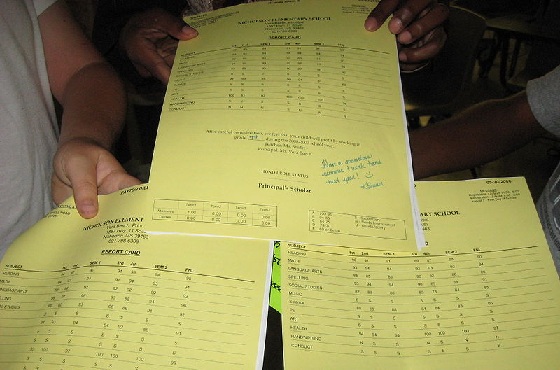 It is the season of report cards. For many students, the first semester is over or ending and report cards have already been posted (or in the retro world, mailed).
It is the season of report cards. For many students, the first semester is over or ending and report cards have already been posted (or in the retro world, mailed).
As parents, teachers and students, we see the report cards differently. Seeing them through a variety of lenses means that what the report cards say may be interpreted differently for each reader.
Students want to know that the work they have done is recognized (if they are good students). And if they struggle, they want some glimmer of hope that there is an opportunity for improved grades and future success. The best report card forms give space and permission for teachers to address the students directly with guidance for improvement and space to explain the strengths of the students that they bring to the class. When report cards do not allow these longer information pieces, teachers need to find other ways to communicate with students whether it is through comments on homework and assessments, or editing marks on shared documents.
For parents, we want to know what our child excels in and what he or she needs more support in. We also want to be reassured that the teacher “gets” our child. Depending on the report card form, there may not be evidence of that. So schools and school systems have to make sure that they find ways to communicate that our child is in good, capable hands via additional tools, not just the report card.
Teachers view the report cards as the official notification from school to home on the students’ progress. Good teachers know that this document cannot be the first mode of communication if “there is trouble in River City”. Teachers undertake the task of report cards seriously, because it is the permanent record of the progress of each child.
Ultimately, report cards’ messages are disseminated in many directions, and they are, innately, a marketing tool, too. At their best, they make students feel acknowledged and understood, they underscore the choices that parents made in choosing the school or the school system and they solidify the communication between home and school.
Next week, we will discuss marketing report cards.